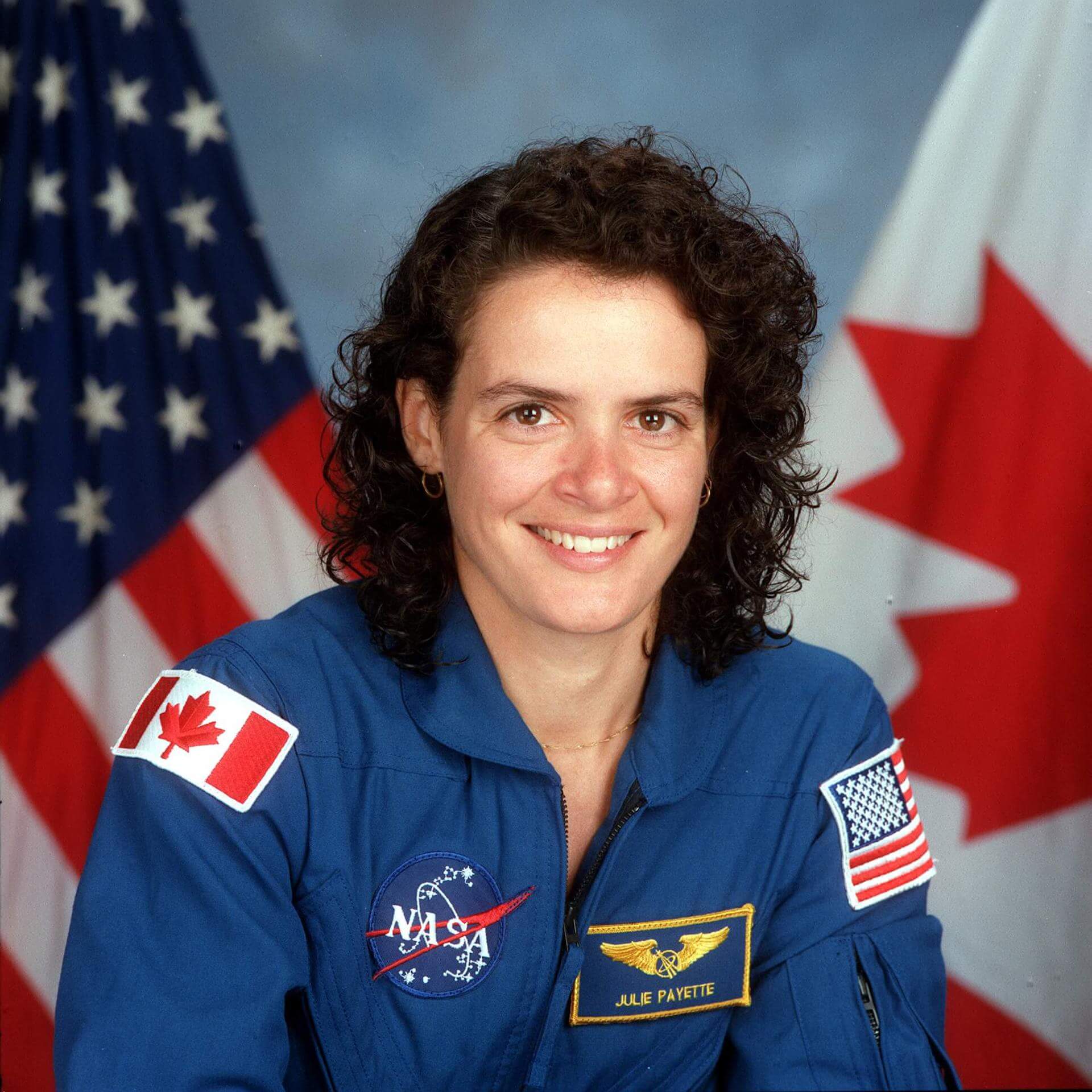Julie Payette
Canadian - (CSA)
Retired
Date of Birth: Oct. 20, 1963
Age: 62
Julie Payette CC CMM COM CQ CD (born October 20, 1963) is the current Governor General of Canada, the 29th since Canadian Confederation. Before assuming office, she was a businesswoman, former member of the Canadian Astronaut Corps, and engineer. Payette has completed two spaceflights, STS-96 and STS-127, logging more than 25 days in space. She served as chief astronaut for the Canadian Space Agency (CSA), and has served as capsule communicator at NASA Mission Control Center in Houston.
Space Shuttle Discovery / OV-103 | STS-96
National Aeronautics and Space Administration | United States of AmericaKennedy Space Center, FL, USA
May 27, 1999, 10:49 a.m.
Status: Success
Mission:
STS-96 was a Space Shuttle mission to the International Space Station (ISS) flown by Space Shuttle Discovery, and the first shuttle flight to dock with the International Space Station. The shuttle carried the Spacehab module in the payload, filled with cargo for station outfitting. STS-96 launched from Kennedy Space Center, Florida, on 27 May 1999 at 06:49:42 AM EDT.
Low Earth OrbitSpace Shuttle Endeavour / OV-105 | STS-127
National Aeronautics and Space Administration | United States of AmericaKennedy Space Center, FL, USA
July 15, 2009, 10:03 p.m.
Status: Success
Mission:
STS-127 (ISS assembly flight 2J/A) was a NASA Space Shuttle mission to the International Space Station (ISS). It was the twenty-third flight of Space Shuttle Endeavour. The primary purpose of the STS-127 mission was to deliver and install the final two components of the Japanese Experiment Module: the Exposed Facility (JEM EF), and the Exposed Section of the Experiment Logistics Module (ELM-ES). When Endeavour docked with the ISS on this mission in July 2009, it set a record for the most humans in space at the same time in the same vehicle, the first time thirteen people have been at the station at the same time. It also tied the record of thirteen people in space at any one time.
Low Earth OrbitThe Canadian Space Agency was established by the Canadian Space Agency Act which received Royal Assent on May 10, 1990. The Canadian space program is administered by the Canadian Space Agency. Canada has contributed technology, expertise and personnel to the world space effort, especially in collaboration with ESA and NASA. In addition to its astronauts and satellites, some of the most notable Canadian technological contributions to space exploration include the Canadarm on the Space Shuttle and Canadarm2 on the International Space Station.
Long March 3B/E
Fengyun-4C
Launch Complex 2 (LC-2) - Xichang Satellite Launch Center, People's Republic of ChinaChina's geostationary meteorological satellite program FY-4 (Feng Yun 4) is the second generation of chinese geostationary meteorological satellites.
Long March 8A
SatNet LEO Group 17
Commercial LC-1 - Wenchang Space Launch Site, People's Republic of ChinaA batch of 9 Low Earth Orbit communication satellites for the Chinese state owned SatNet constellation operated by the China Satellite Network Group.…
Soyuz 2.1a
Obzor-R No.1
43/4 (43R) - Plesetsk Cosmodrome, Russian FederationNote: Assignment of payloads to this launch is uncertain. The Russian Obzor-R satellite is a planned X-band radar earth observation satellite desi…
LVM-3 (GSLV Mk III)
BlueBird Block 2 #1
Satish Dhawan Space Centre Second Launch Pad - Satish Dhawan Space Centre, IndiaAST SpaceMobile’s Block 2 BlueBird satellites are designed to deliver up to 10 times the bandwidth capacity of the BlueBird Block 1 satellites, requi…
Long March 12A
Demo Flight
Long March 12A Pad - Jiuquan Satellite Launch Center, People's Republic of ChinaFirst test launch of CASC/SAST’s Long March 12A rocket, with a dummy payload. The rocket’s 1st stage attempted to land on a landing pad about 300 km …



